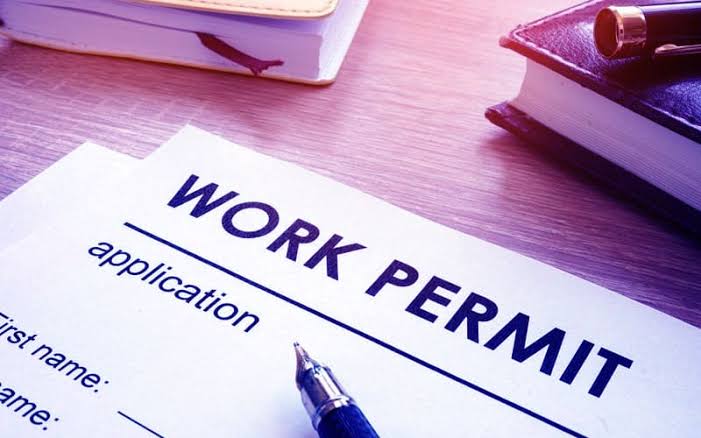Securing a work permit in Canada opens up exciting opportunities in one of the world’s most welcoming countries for professionals.
This guide will walk you through the detailed process of obtaining a Canadian work permit, ensuring you understand every step clearly.
Understanding the Canadian Work Permit System
A Canadian work permit allows foreign nationals to work legally in Canada. It’s essential to recognize that there are two main types of work permits:
1. Employer-specific Work Permit: This permit allows you to work for a specific employer, in a specific location, and under specific conditions.
2. Open Work Permit: This permit allows you to work for any employer in Canada, except those who are listed as ineligible.
Determine Your Eligibility
Before applying for a work permit, ensure you meet the general eligibility requirements:
1. Job Offer: Typically, you need a valid job offer from a Canadian employer.
2. LMIA (Labour Market Impact Assessment): Some work permits require an LMIA, a document from Employment and Social Development Canada (ESDC) proving that hiring a foreign worker will not negatively impact the Canadian labor market.
3. Proof of No Criminal Record: You might need to provide police clearance certificates.
4. Health Examination: In certain cases, a medical examination may be required to ensure you do not pose a health risk.
Types of Work Permits
1. Employer-specific Work Permit
To obtain an employer-specific work permit:
1. Obtain a Job Offer: Secure a job offer from a Canadian employer.
2. Labour Market Impact Assessment (LMIA): The employer must apply for an LMIA unless the job is LMIA-exempt. The LMIA confirms that no Canadian citizen or permanent resident is available to fill the position.
3. Apply for the Work Permit: Submit your application online or through a Canadian visa office with your LMIA and job offer letter.
2. Open Work Permit
To apply for an open work permit:
1. Check Eligibility: Open work permits are available to specific groups, including international students, spouses of skilled workers, and those who have been selected by a provincial nominee program.
2. Prepare Documents: Gather necessary documents like proof of relationship (if applicable) and evidence of your current status in Canada.
3. Apply Online or by Mail: Complete your application and submit it through the Canadian immigration website or by mail.
Application Process
1. Gather Required Documents: Ensure you have all necessary documents, such as your passport, job offer letter, LMIA (if applicable), and proof of identity and eligibility.
2. Complete the Application Form: Fill out the appropriate application form for your work permit type. Forms are available on the Immigration, Refugees and Citizenship Canada (IRCC) website.
3. Pay the Application Fee: The application fee varies depending on the type of work permit and your nationality. Check the IRCC website for the current fees.
4. Submit Your Application: Submit your completed application and documents online or by mail. Online applications are usually processed faster.
5. Attend an Interview (if required): In some cases, you may be required to attend an interview at a Canadian visa office.
After You Apply
1. Track Your Application: Use the application tracking system to monitor the status of your work permit application.
2. Wait for a Decision: Processing times vary based on your application type and country of origin. Check the estimated processing times on the IRCC website.
3. Receive Your Work Permit: If your application is approved, you’ll receive a work permit. Make sure to review it for accuracy.
Tips for a Successful Application
1. Ensure Accuracy: Double-check all information on your application to avoid delays or rejections.
2. Follow Instructions: Adhere to all instructions provided by the Canadian immigration authorities.
3. Seek Professional Help: If you’re unsure about any part of the process, consider consulting with an immigration consultant or lawyer.
Common Mistakes to Avoid
1. Incomplete Documentation: Missing documents can delay your application or result in rejection.
2. Incorrect Information: Providing false or misleading information can lead to serious consequences, including being barred from reapplying.
3. Missing Deadlines: Ensure you submit your application before the deadlines to avoid complications.
Additional Resources
1. IRCC Website: The official Immigration, Refugees and Citizenship Canada website provides comprehensive information and updates.
2. Canadian Embassy/Consulate: Contact your local Canadian embassy or consulate for guidance and assistance.
3. Immigration Consultants: Accredited immigration consultants can offer professional advice and support throughout your application process.
Conclusion
Obtaining a work permit in Canada involves a clear understanding of the requirements and steps involved. By following this guide and ensuring you meet all eligibility criteria, you can navigate the application process with confidence.
If you’re looking to work in Canada temporarily or seek permanent opportunities, proper preparation and adherence to guidelines will enhance your chances of a successful application.



